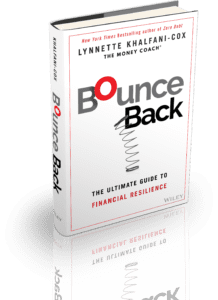Making the decision to freelance full-time is exciting—but it’s also a major shift that demands more than just courage. Whether you’re drawn by the promise of flexibility, freedom, or control over your own schedule, there’s more to freelancing than tossing your work badge in the trash. Before you trade in your 9-to-5 for client calls in pajama pants, you need a rock-solid plan to support your transition. Freelancing full-time isn’t just a career move—it’s a lifestyle shift that requires structure, strategy, and a serious mindset.
- Planning your finances and setting up a buffer is essential before going freelance full-time
- Building a steady client base while still employed reduces early risk and stress
- A strong online presence and defined niche make it easier to attract the right clients
- Setting up systems and boundaries early helps prevent burnout and chaos down the line
So, you’re thinking about leaping. No more commuting, no more micromanaging bosses, no more “Hey, can you just hop on a quick Zoom?” five minutes before you clock out. The freelance life is calling—and it’s tempting—total freedom. Control over your schedule. Wearing pajama pants during client calls.
But let’s pause for just a second.
Quitting your 9-to-5 to freelance full-time is a big deal. It’s bold. And while bold is good, bold and prepared is way better. You’re not just switching jobs—you’re becoming your boss. That comes with perks, but it also comes with a load of responsibility, especially regarding money, time, and client work.
Before you send that resignation email, there are a few things you need to have in place. These aren’t “nice-to-haves.” These solid, grown-up decisions set the foundation for your freelance success.
Let’s dive into the five things you should do before making freelancing your full-time gig.
Get Honest About Your Finances
Let’s be real—freelancing sounds a lot sexier than it is when you’re looking at it from the outside. But once you’re in it, one of the first things that hits you is the money. It doesn’t come in neatly every two weeks. There’s no HR department automating your taxes. And if a client disappears without paying, guess who’s responsible for chasing it down?
Before you go full-time, you’ve got to understand your financial situation inside and out.
Start with your baseline: How much must you survive each month? Not your dream income, but your minimum viable lifestyle. List it for rent or mortgage, groceries, bills, and insurance. Then add what you’d like to make, factoring in taxes (yep, they hurt), retirement savings, and emergency funds.
Next, create a buffer. Ideally, you’ll want three to six months of expenses saved up before going solo. It’s your safety net for slow months, late invoices, or unexpected expenses (like when your laptop dies mid-project).
Also, familiarize yourself with quarterly taxes and how to calculate them. Nothing wrecks a new freelancer’s mood like finding out they owe the IRS a few grand because they didn’t plan.
Money might not be why you’re getting into freelancing, but managing it well is why you’ll get to stay.
Learn the Financial Language That Impacts You
Now that you’ve examined your financial reality, it’s time to go deeper. Freelancers operate in their little money world, and if you’re going to thrive, you need to learn how things work. It starts with understanding the system’s set-up to support you.
Finding the best banking account designed specifically for freelancers will give you a serious edge—if you know what to look for. This isn’t about memorizing jargon just to sound smart. It’s about knowing what tools are out there and how to use them to your advantage.
Take business checking accounts, for example. They’re designed to help you separate personal and business expenses, which can be a lifesaver come tax time. Some are even tailored for gig workers and solopreneurs, offering features like auto-invoicing, expense tracking, and tax estimators.
Then there are invoicing platforms that help streamline the most dreaded part of freelancing—getting paid. These tools let you set payment terms, send reminders, and even automate late fees. When cash flow isn’t guaranteed, staying on top of incoming money is everything.
And don’t overlook digital wallets or mobile banking options designed with freelancers in mind. These tools can give you quicker access to funds and better control over your budget.
Understanding how these systems work doesn’t just save you headaches. It makes you feel more in control. And that sense of control? It’s one of the biggest confidence boosters when stepping into the freelance unknown.
Build a Steady Client Pipeline Before You Quit
There’s a certain thrill to handing in your notice and diving headfirst into freelancing. But trust me—you don’t want to jump into the deep end without at least a few floaties. One of those floaties? A reliable, somewhat steady stream of clients.
Before you walk away from your day job, you need to prove to yourself that people will pay you for your skills. The best way to do that is to freelance while still employed. Nights, weekends, lunch breaks—whatever it takes to test the waters.
Not only does this give you a taste of the work and client communication style you’ll be dealing with, but it also helps you build an actual portfolio and (even better) client testimonials. That stuff will be helpful when pitching new gigs or sending cold emails.
And let’s talk numbers. You don’t need to replace your full-time income immediately, but you need enough paying work lined up to cover your basic expenses for the first few months. That could mean a couple of long-term contracts, a handful of recurring projects, or a rotating door of smaller gigs.
Whatever your mix looks like, don’t forget to tighten up your client onboarding process. That means contracts (even simple ones), clear payment terms, and a method for collecting information. The more you treat it like a real business now, the easier it’ll be once you do it full-time.
Define Your Brand and Online Presence
Let’s get into something more creative—your brand- because freelancing isn’t just about doing the work. It’s about getting the job. And for that, people need to know who you are, what you do, and why you’re worth hiring.
First things first: claim your digital space. A simple website with your name or brand, your services, a few samples, and contact info goes a long way. You don’t need anything flashy—just clean, clear, and professional. Think of it as your online business card.
Next, dial in your niche. What do you do? Who do you do it for? The more precise you are about this, the easier it’ll be for clients to say “yep, that’s exactly who I need.”
Then there’s the social proof side. If you’ve got testimonials, show them off. Be consistent and authentic if you post about your work on LinkedIn or Instagram. You don’t need to post daily—just enough to build a sense of presence and credibility.
And finally, get a legit email address. That “freelancer87@gmail.com” energy isn’t cutting it anymore. You’re running a business now, so act like one—even if it’s you in your bedroom with a laptop and three plants for coworkers.
Set Clear Boundaries and Workflow Systems
One of the biggest traps new freelancers fall into is working constantly. You leave the 9-to-5 grind only to land in a 24/7 hustle, answering client emails at midnight and feeling guilty every time you’re not “being productive.”
Don’t do that to yourself.
Before you go full-time, map out what your ideal workday looks like. When do you want to start and stop working? How many clients can you realistically handle without burning out? What’s your policy on urgent requests or weekend emails? You must decide these things before you’re deep in the weeds and saying “yes” to everything.
Then set up the systems that will help you stick to those boundaries. Use a calendar to block work hours and schedule breaks. Try a project management tool like Trello, Asana, or Notion to keep track of tasks and deadlines. Set up automatic replies and templates for common client messages to save time and energy.
Also, don’t underestimate the power of routines. Whether you start your day with coffee and a to-do list or end it by reviewing your hours and planning tomorrow, routines create rhythm, which keeps burnout at bay.
Freelancing gives you freedom, but that freedom needs structure to thrive. You’re in charge now, so you get to protect your time and sanity.
Conclusion
Leaping into full-time freelancing can be exhilarating and terrifying—and that’s normal. It’s a big change; like any significant change, it comes with a learning curve.
But if you’ve done the prep work, you’re already ahead. You’ve looked at your finances, brushed up on what it takes to run the business, built a client base, assembled your online presence, and created the structure you need to succeed.
Will everything be perfect right away? Probably not. But freelancing is a long game, and being thoughtful about how you start will make the journey much smoother.
You don’t have to be fearless. You just have to be ready. And now, you kind of are.
Frequently Asked Questions
1. How much money should I save before going freelance full-time?
Experts recommend saving 3–6 months of living expenses before quitting your job.
2. Should I freelance while still working full-time?
Yes. It’s a smart way to build experience, test the waters, and line up early clients.
3. What tools should freelancers use to manage money?
Business bank accounts, invoicing software, and tax estimators help freelancers stay financially organized.
4. How do I attract clients as a new freelancer?
Start with your network, freelance platforms, and a clear online presence that defines your niche and value.
5. How can freelancers avoid burnout?
Set work hours, create routines, and use systems to manage tasks and client expectations.










